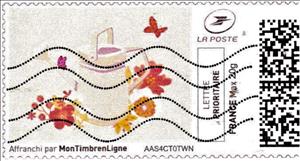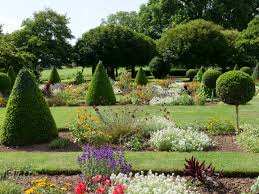Stamp: Summer. Flowers and a Watering Can. Blue colour missing (France 2019)
Summer. Flowers and a Watering Can. Blue colour missing (France 2019)
01 January (France ) within release MonTimbrEnLigne. Seasons goes into circulation Stamp Summer. Flowers and a Watering Can. Blue colour missing face value Prioritaire No Face Value
| Stamp Summer. Flowers and a Watering Can. Blue colour missing in catalogues | |
|---|---|
| Colnect codes: | Col: FR-TIM 2019-39b |
Stamp is square format.
Also in the issue MonTimbrEnLigne. Seasons:
- Stamp - Summer. Flowers and a Watering Can. Blue colour missing face value Prioritaire;
- Stamp - Summer. Flowers and a Watering Can. Resdesign face value Lettre;
- Stamp - Autumn. Hedgehog and Acorns. Specimen face value Lettre;
- Stamp - Spring. Flowers in Wellies. Black face value Lettre;
- Stamp - Summer. Flowers and a Watering Can in black face value Lettre;
- Stamp - Winter. Snowman in black face value Lettre;
- Stamp - Spring. Flowers in Wellies face value Lettre;
- Stamp - Summer. Fishing Hut on the Atlantic Coast face value Ecopli;
- Stamp - Autumn. Bonfires and Nuts in black face value Lettre;
- Stamp - Autumn. Pumpkins and Pears in black face value Lettre;
- Stamp - Spring. Birds Nesting. Lemon Background face value Lettre;
- Stamp - Summer Landscape in black face value Lettre;
- Stamp - Summer. Girl in a field of Sunflowers face value R1-AR;
- Stamp - Summer. Sand Castle in black face value Lettre;
- Stamp - Winter. Cat on the Windowsill in black face value Letre;
- Stamp - Winter. Sledge in black face value Lettre;
- Stamp - Summer. Beach Scene. Solitary Blue and White Beach Umbrella face value Ecopli;
- Stamp - Spring. Birds Nesting. Pink Background face value R1-AR;
- Stamp - Summer. Beach Scene. Windscreens face value R1-AR;
Stamp Summer. Flowers and a Watering Can. Blue colour missing it reflects the thematic directions:
A flower, sometimes known as a bloom or blossom, is the reproductive structure found in plants that are floral (plants of the division Magnoliophyta, also called angiosperms). The biological function of a flower is to effect reproduction, usually by providing a mechanism for the union of sperm with eggs. Flowers may facilitate outcrossing (fusion of sperm and eggs from different individuals in a population) or allow selfing (fusion of sperm and egg from the same flower). Some flowers produce diaspores without fertilization (parthenocarpy). Flowers contain sporangia and are the site where gametophytes develop. Many flowers have evolved to be attractive to animals, so as to cause them to be vectors for the transfer of pollen. After fertilization, the ovary of the flower develops into fruit containing seeds. In addition to facilitating the reproduction of flowering plants, flowers have long been admired and used by humans to beautify their environment, and also as objects of romance, ritual, religion, medicine and as a source of food.
A garden is a planned space, usually outdoors, set aside for the cultivation, display, and enjoyment of plants and other forms of nature. The single feature identifying even the wildest wild garden is control. The garden can incorporate both natural and artificial materials
Summer is one of the four seasons. It is the hottest season of the year. In some places, summer is the wettest season (with the most rain), and in other places, it is a dry season. Four seasons are found in areas which are not too hot or too cold. Summer happens to the north and south sides of the Earth at opposite times of the year. In the north part of the world, summer takes place between the months of June and September, and in the south part of the world, it takes place between December and March. This is because when the north part of the Earth points towards the Sun, the south part points away.



